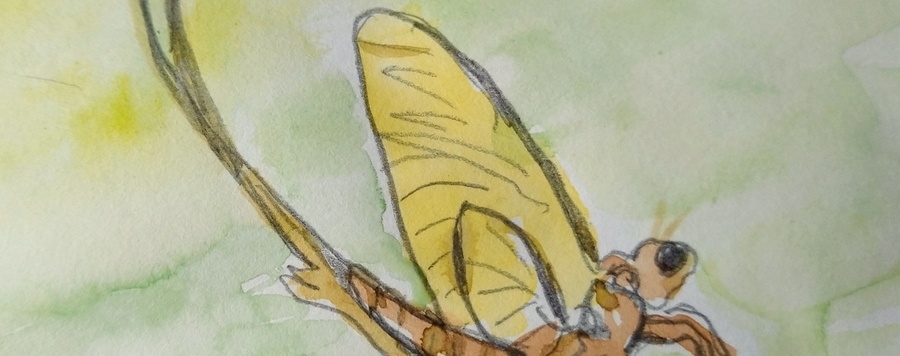
Insect wings evolved from legs, mayfly genome suggests
Along rivers and streams around the world, mayflies are a rite of spring. The small insects lead double lives, with the young thriving in water and the adults emerging around June for just a few hours to mate and quickly die. Because of their sheer numbers, mayflies are important food for birds, fish, and mammals. They spend most of their lives underwater. And they still look a lot like the earliest airborne insects.
Isabel Almudi and Fernando Casares, integrative biologists at the Andalusian Center for Developmental Biology and colleagues figuered out how to breed the mayfly Cloeon dipterum in the lab. That enabled them to sequence the genome and then measure gene activity in all life stages and in a variety of tissues, a first for mayflies. Mayfly gills are thought to arise from the upper legs. The finding of similar gene activity in both wings and gills are a hint that supports the idea that wings and gills evolved at least in part from legs. This theory might be discussed. You have to have in mind that gills are derived (secondary) and either newly formed or acquired by adapting an old structure as a gill performing underwater respiration. The reason is that all insects were shown to be originally terrestrial.
The research of the Museum Koenig also focuses on the evolutionary history of insects and tries to trace out the relationship between the goups of insects to an unprecedented extent. A major goal of these projects is the reconstruction of the evolutionary tree of insects. The aim is a better understanding of the diverse adaptations of insects to their environment over the course of the earth's history.
Source: „Insect wings evolved from legs, mayfly genome suggests“
https://www.sciencemag.org/news/2020/06/insect-wings-evolved-legs-mayfly...
Posted in: Plants & Animals doi:10.1126/science.abd1311
Kukalová-Peck, J. 2009. Karbonhaltige protodonatoide Libellennymphen und die Synapomorphien von Odonatoptera und Ephemeroptera (Insecta: Palaeoptera). Palaeodiversity 2: 169-198, Stuttgart.





